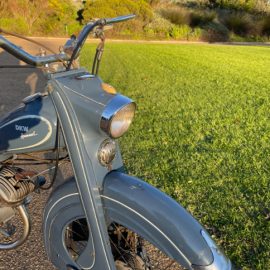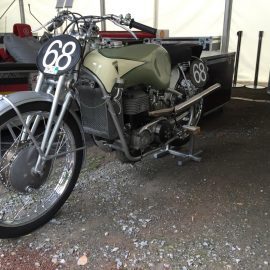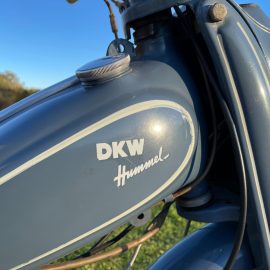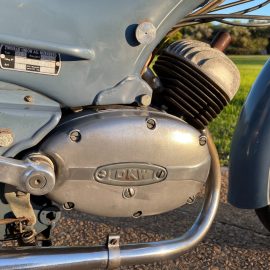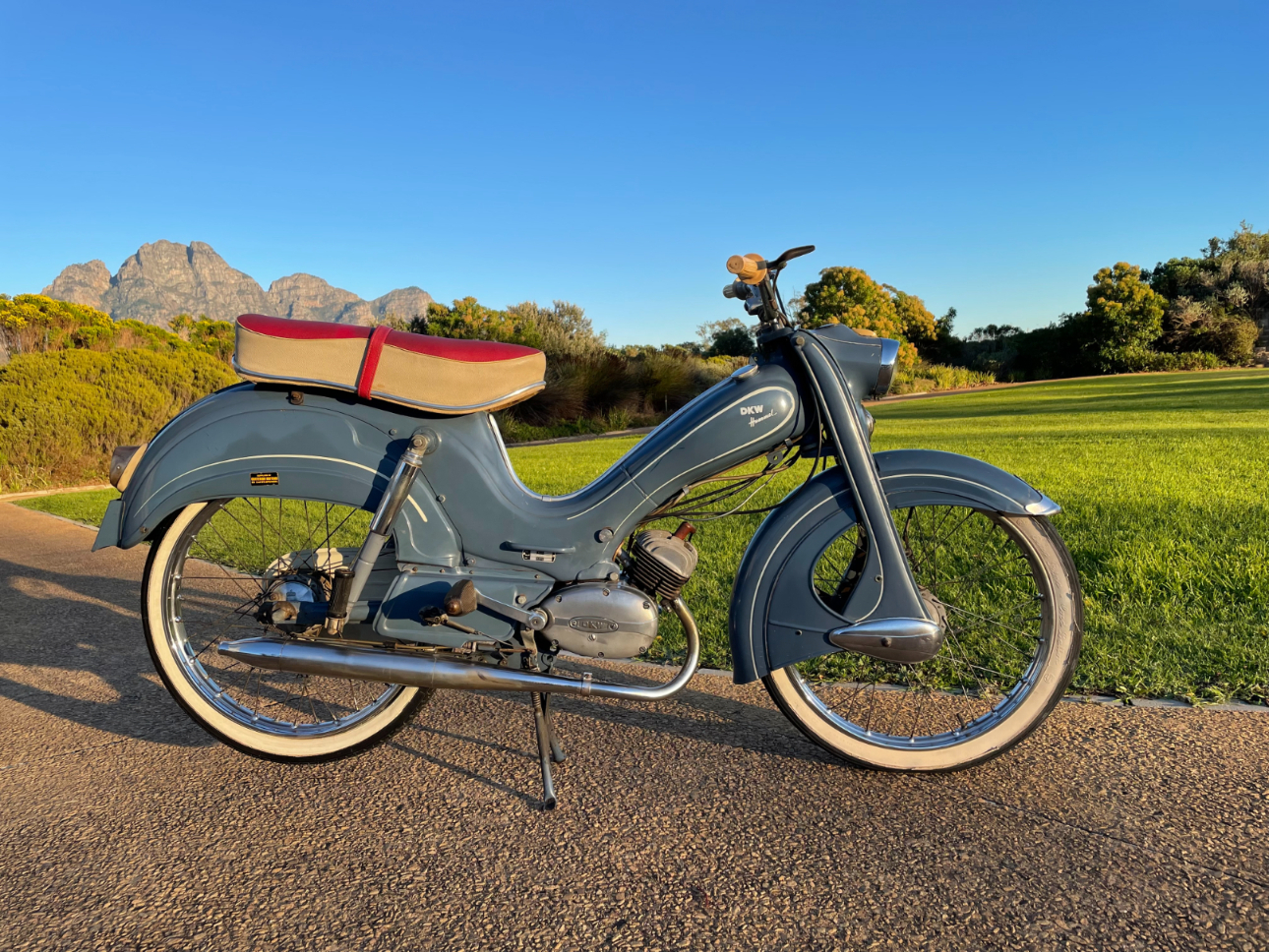
31 Jul On Yer Bike: DKW Hummel
This month FMM Curator Wayne Harley takes a peek at a Deek…
The company DKW – Dampf-Kraft-Wagen, which translated means steam-powered car – was founded in 1916 by a Danish engineer Jorgen Skafte Rasmussen in Saxony, Germany, and as the name suggests, his focus was on steam power and steam-powered cars. However, the world was changing fast and the internal combustion engine was the way of the future. In 1919, Rasmussen adapted and started making small-scale two-stroke engines that were fitted into motorcycles. These machines were referred to as Das-Kleine-Wunder, ‘The Little Marvel’.
What started out as a rocky and unsuccessful venture in 1916 had by the end of 1930 seen DKW become the largest motorcycle manufacturer in the world. By 1932, DKW had joined forces with Audi, Horch and Wanderer to form Auto Union. And in those last few years before WW2, DKW would produce some amazing and very revolutionary motorcycles, thus forming the basis of two-stroke technology for generations to come with ideas being carried over late into the modern era.
One of the most memorable DKWs has to be the 1937 250 SS raced by Ewald Kluge, which helped him claim two European championships in 1938 and 1939. (I was very fortunate to see this motorcycle first-hand at the Schloss Dyck Classic Days event in Germany in 2016.) The 250 SS was a remarkable supercharged split-single that had three pistons but only one combustion chamber…
Now I hope I can describe this correctly as it does baffle me a little, but it’s ingenious. The horizontal front cylinder acts as a supercharger (ladenpumpe), forcing the charged air through the transfer port under pressure into the combustion chamber, where transfer porting is controlled by the first vertical piston, and then exhaust porting is controlled by the second vertical piston. This little 250cc engine propelled the machine to a top speed of 185 km/h and made such a noise it could be heard over 10 kilometres away. Well! Almost!
However, the onset of war changed things, with only a motorcycle known as the RT 125 being produced during that period. After the war, Germany was split into West and East and DKW, whose factory was in the east, naturally fell under East German control and was eventually renamed IFA and then later MZ – but that’s another remarkable story. Many of the top DKW officials and staff fled to the west, taking with them valuable technical knowledge as well as the DKW name. It was during this immediate post-war period, a time when West Germany began to rebuild itself out of the ruins and destruction of the hostilities, that DKW quickly reintroduced RT 125 to meet the demand for cheap two-wheel transport. The motorcycle was so successful that Harley Davidson and BSA both copied it under what is known as ‘war reparations’. It is also claimed that Yamaha based one of its motorcycles on the RT 125. There was also the production of scooters with DKW and NSU, Heinkel and Zundapp all jumping on the band-wagon to meet the demand for affordable mobility.
Which brings us to FMM’s little 49cc DKW Hummel (Hummel is German for Bumblebee), a machine claimed to be the world’s first 3-speed moped. It was introduced in 1956 as the Type 101 and stayed in production until the last days of Auto Union, before the company was taken over by Volkswagen. It was seen in its final form as the model types 112 and 113, as is the case with the museum’s 1965 example, with its combination plush seat and integrated headlight. The bike has the same 49cc two-stroke engine coupled with a 3-speed cable-operated transmission. The press-steel frame has 23-inch spoke steel wheels with expanding drum brakes; identical to the specifications of the 101 models introduced almost a decade earlier. Top speed was still 45 km/h, and even in first gear to get moving it was still advisable to pedal it off the line, just like a bicycle.
However, by 1965 things in Germany were changing quickly and the nation was becoming prosperous. People’s need for cheap mobility was dwindling, which had a huge effect on the demand for scooters and mopeds. The museum’s Hummel must have been one of the last examples ever to be bought in South Africa. It was sold by Criterion Motors of Springs to a Mr Gert J Human of Heidelberg, Gauteng, and its first and only registration was TH1086 in 1968. It was donated by Mr Human to the Heidelberg Transport Museum on the 1 June 1985, and relocated to the Franschhoek Motor Museum in April 2005. TH1086 has never been taken apart or restored, and must be one of the finest and unmolested examples around today.
Visitor Note: The DKW Hummel is currently on view in Hall B.




